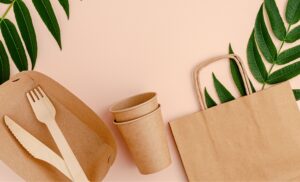In recent years, there has been a noticeable surge in the demand for eco-friendly utensils. This shift towards sustainable dining implements stems from various factors, each contributing to the growing consciousness surrounding environmental conservation. Let’s delve into the multifaceted reasons behind this burgeoning trend.
Consumer Needs
Modern consumers are increasingly prioritizing sustainability in their purchasing decisions. They are more conscious of the environmental repercussions of their choices and seek alternatives that align with their values. Eco-friendly utensils resonate with this environmentally conscious consumer base, offering a guilt-free dining experience. Moreover, as individuals become more health-conscious, they are drawn towards utensils made from natural materials, free from harmful chemicals commonly found in traditional plastics.
Environmental Impact
The environmental impact of conventional plastic utensils is staggering. Single-use plastics contribute significantly to pollution, particularly in oceans and landfills, where they persist for centuries, harming marine life and ecosystems. In contrast, eco-friendly utensils, typically crafted from biodegradable materials such as bamboo, wheat straw, or cornstarch-based PLA, offer a sustainable alternative. By choosing these utensils, consumers actively reduce their carbon footprint and mitigate the detrimental effects of plastic pollution on the environment.
Waste Reduction
One of the most compelling reasons driving the demand for eco-friendly utensils is the imperative to reduce waste. Traditional plastic utensils are inherently wasteful, designed for single-use and disposal. This disposability leads to an accumulation of non-biodegradable waste that overwhelms landfills and contributes to environmental degradation. In contrast, eco-friendly utensils, often compostable or recyclable, promote a circular economy where materials are reused or returned to the earth without causing harm. By embracing these utensils, consumers participate in the global effort to minimize waste generation and foster a more sustainable future.
Resource Conservation
The production of conventional plastic utensils is resource-intensive, relying heavily on fossil fuels and non-renewable resources. In contrast, eco-friendly utensils leverage renewable resources and sustainable manufacturing processes, minimizing environmental strain. Materials such as bamboo and sugarcane offer a renewable alternative to finite resources, reducing the ecological footprint associated with utensil production. Additionally, the adoption of eco-friendly utensils encourages innovation in materials science and manufacturing techniques, driving further advancements in sustainable practices.
In conclusion, the escalating demand for eco-friendly utensils reflects a broader societal shift towards sustainability and environmental stewardship. Consumers are increasingly mindful of the ecological impact of their choices and seek alternatives that minimize harm to the planet. By embracing eco-friendly utensils, individuals not only fulfill their own needs for sustainable living but also contribute to a collective effort to preserve the environment for future generations. As this trend continues to gain momentum, the widespread adoption of eco-friendly utensils holds the promise of a greener, more sustainable future for all.






